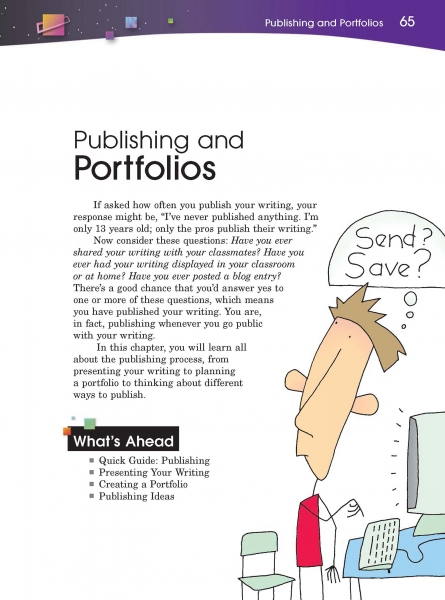Page 065 from

Start-Up Activity
Ask students to explain this idea: Publishing is to writers what live performances are to a musicians and exhibits are to artists. (Possible response: Musicians and artists work hard on their pieces because they know that the public will hear or view them. In the same way, writers put forth their best effort when they publish their work. Publishing makes all of the effort worthwhile.)
Then have a volunteer read the introduction aloud. Ask students to share their most memorable publishing/sharing experience.
Think About It
“You learn ways to improve your writing by seeing its effect on others.”
—Tom Liner

Start-Up Activity
Ask students to explain this idea: Publishing is to writers what live performances are to a musicians and exhibits are to artists. (Possible response: Musicians and artists work hard on their pieces because they know that the public will hear or view them. In the same way, writers put forth their best effort when they publish their work. Publishing makes all of the effort worthwhile.)
Then have a volunteer read the introduction aloud. Ask students to share their most memorable publishing/sharing experience.
Think About It
“You learn ways to improve your writing by seeing its effect on others.”
—Tom Liner